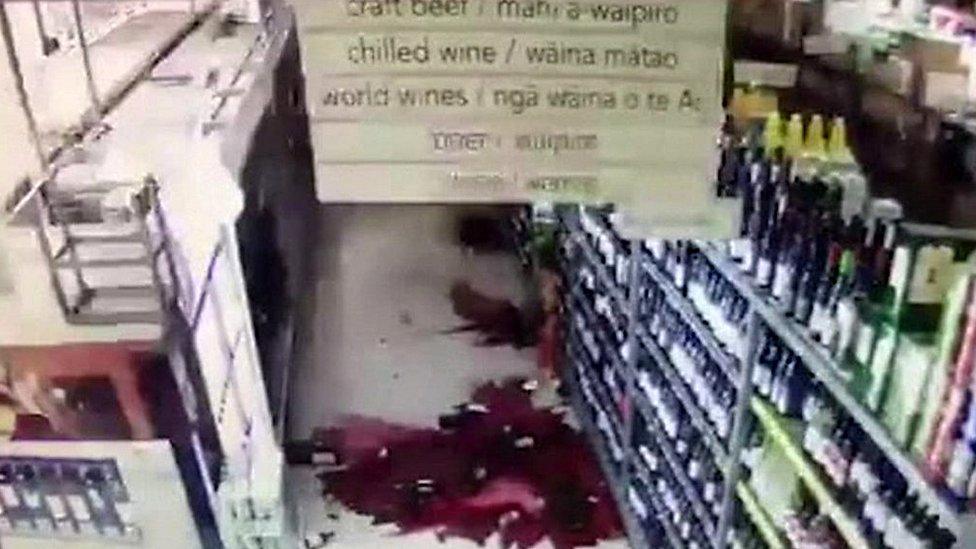New Zealand quake: The cut-off tourist town of Kaikoura
- Published
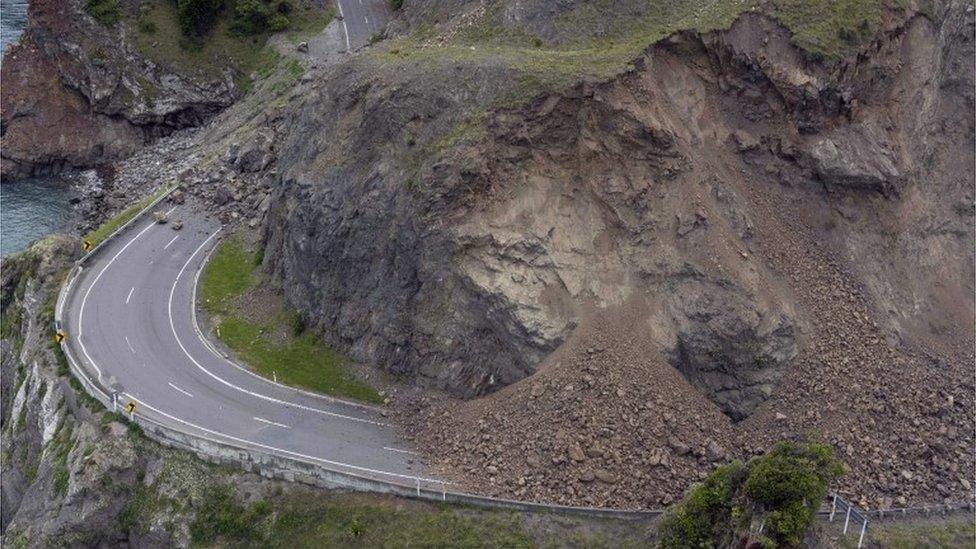
The tourists are gone, the town is cut off and the sewage is backing up, but businesses in quake-hit Kaikoura are vowing to struggle on.
The town was cut off from the rest of New Zealand's South Island when a magnitude 7.8 earthquake destroyed its roads and railway on 14 November.
Nearly two weeks later there is still no easy way in or out of the town and its biggest industries - fishing, agriculture and tourism - have ground to an agonising halt, just as it was preparing for peak visitor season.
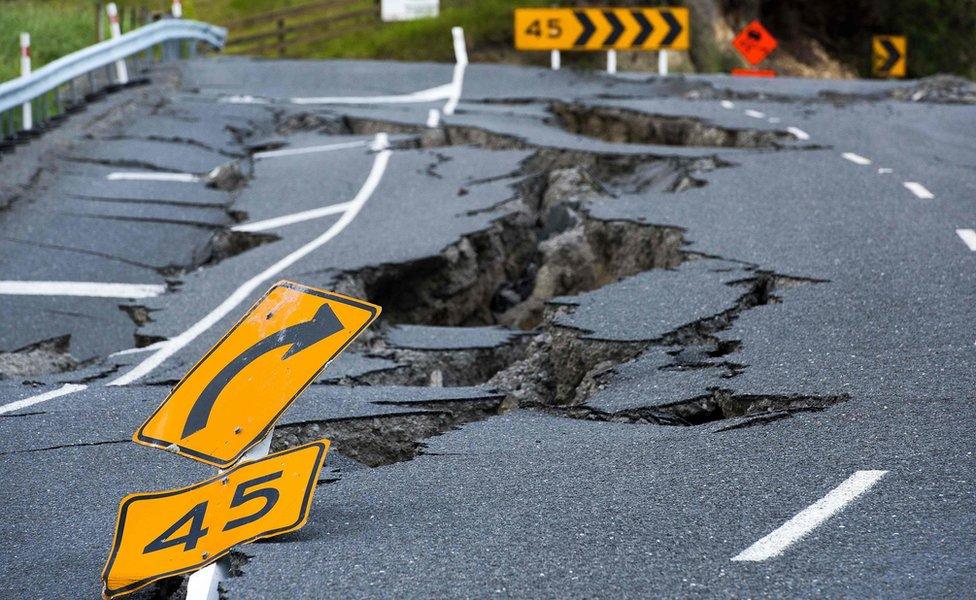
Restoring road access is the highest priority for many
"Quite literally, the money has just stopped coming in," said Matt Foy, the founder of Kaikoura Kayaks, external.
"We've had a couple of tours out with people who were stranded here who have nothing else to do, but at this time of year we should be absolutely heaving."
Like many in the town, he is relying on government assistance, considerate banks and donations.
A town which relies on tourism, farming and fishing is now struggling to find a way forward.
"I hear that people are milking their cows and the milk is going down the drain because there are no tankers coming in to pick that milk up," said Mr Foy.
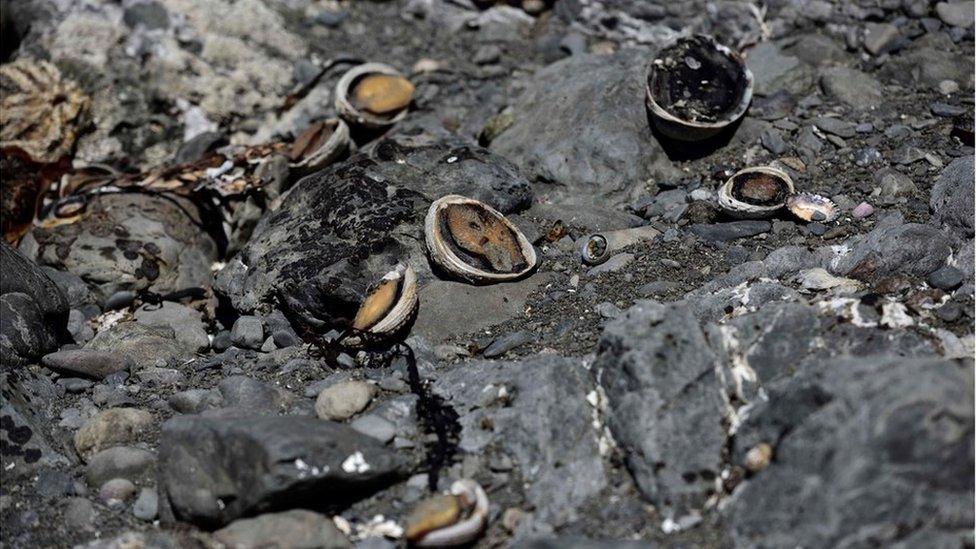
Shellfish lie dead where they once would have been underwater
Ben Dalton, deputy director-general at New Zealand's Ministry for Primary Industries, external (MPI) said that for the next three months "we have a ban on the taking of paua [abalone], seaweed and shellfish, and a one-month ban on the taking of crayfish".
The halt is to allow their populations to recover after the sea bed rose "up to 4m" (13ft) in places, stranding and killing huge numbers of the animals. Much of that sealife is now festering on the shoreline.
The town's harbour is also now obstructed and "the sewage system has packed up". If sewage tanks cannot be brought in, it may have to be discharged into the sea.
Hana O'Regan is a spokesperson for the Ngai Tahu, the prominent Maori tribe in the region which has a number of seafood, farming and tourism business in Kaikoura.
In the immediate aftermath of the quake, the tribe was hosting hundreds of people in the traditional meeting place, the marae, and was helicoptering in supplies to local people.
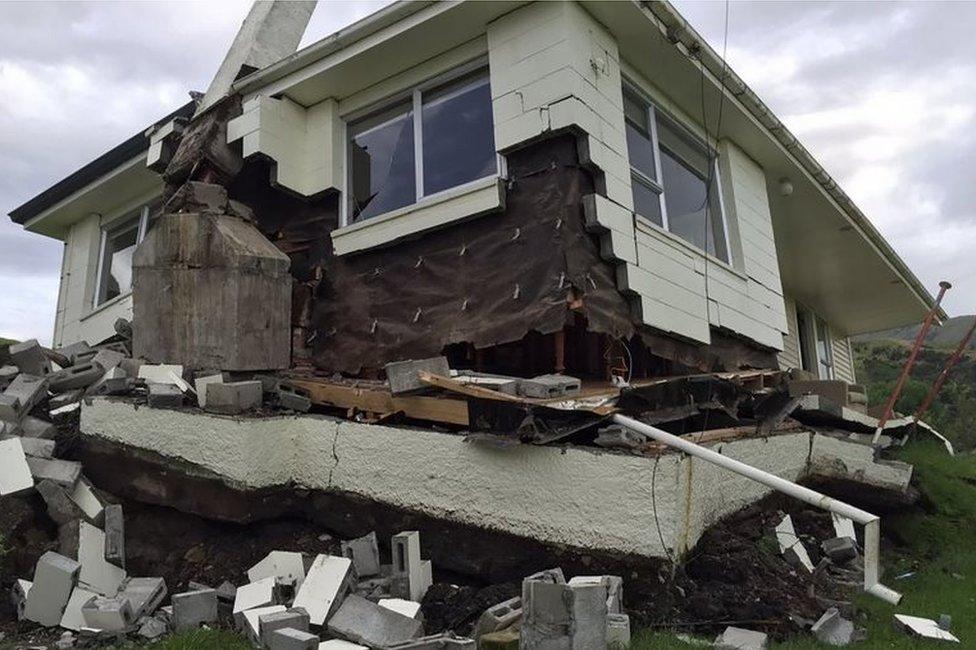
Many people are unlikely to ever be able to return to their homes
At one point, the people staying in the marae were dining on crayfish salvaged from a Ngai Tahu-owned facility in the town.
"It looked very nice on TV, but in reality that was the only food source in town," said Ms O'Regan.
BBC News Sting
She said that with homes still being assessed to see if they're safe to live in, and without any easy way of getting to the town - and with strong aftershocks still hitting - community members "haven't even started talking about what's going to happen next".
While people are determined to regroup and think of new opportunities, "at the moment the priority is on the families, the community and keeping people safe".
"In terms of the impact on the economy, even the word significant doesn't quite cover it. It's an absolutely gamechanger in what will be able to be done there."
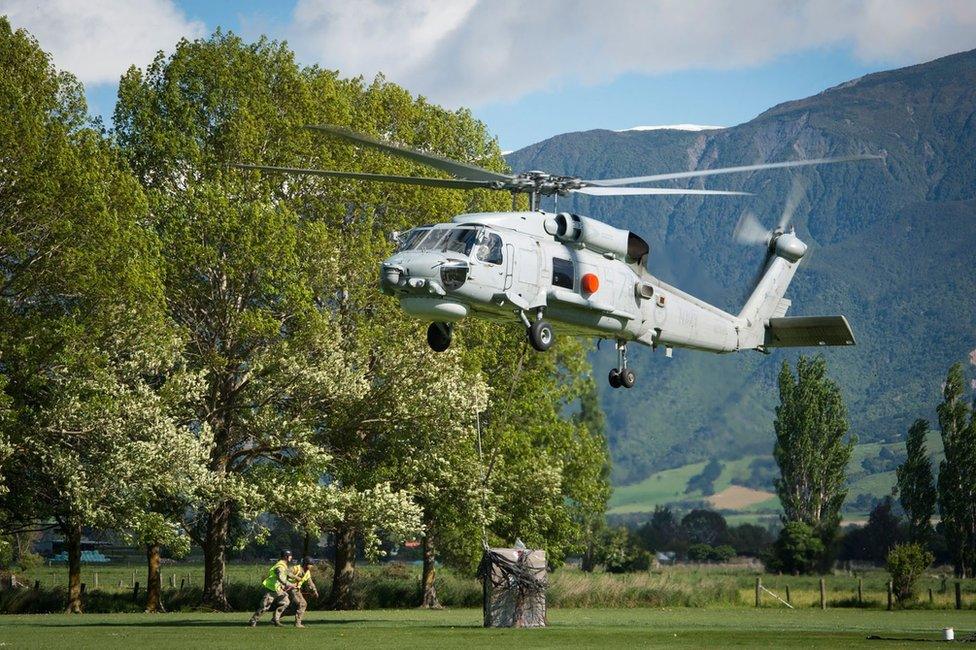
New Zealand's military has been airlifting supplies into Kaikoura
The only businesses which have not ground to a complete halt, says Mr Foy, are the bars and cafes.
"Everyone needs to eat and go and vent somewhere and have a beer and have a chat about things."
Despite delays in reconnecting the town - aftershocks have caused further landslips - there is a determination to carry on. "It's just a hurdle we have to get over," says Mr Foy.
But for intrepid visitors that come when the roads open, the huge geological changes have created "a new playground" to explore, he promises.
"We have a new phenomenon in Whalers Bay with the "Hope Springs" he says, using his name for an area of bubbles now coming up from the sea floor, apparently caused by gasses being released from the seabed.
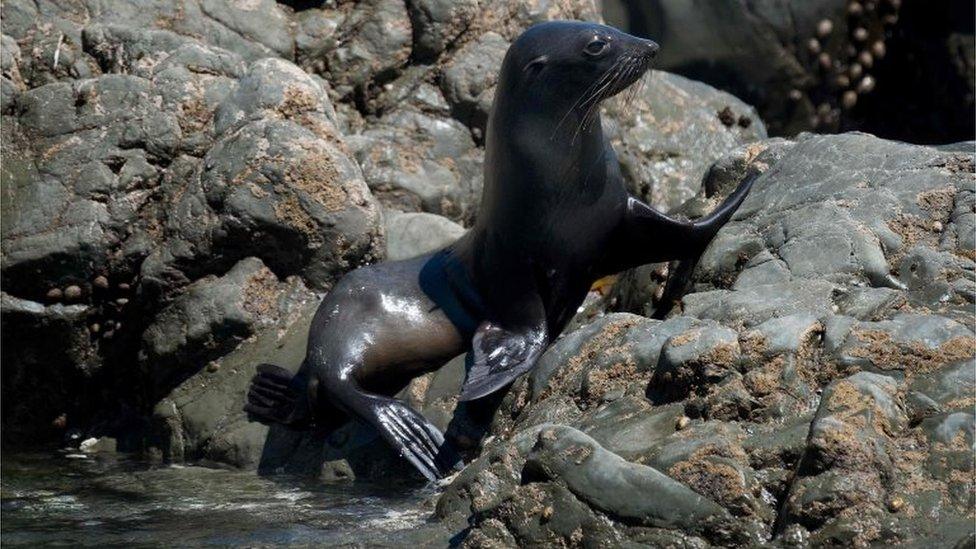
A local seal colony has brought some hope after it returned to rocks outside the town to breed
He is hoping it might even become a draw for tourists once road access is restored. Currently the only way in is by military convoy on a damaged inland road and on a handful of often booked-out flights.
"It's getting road access that's the priority" he says, "and letting people know that it's safe to come here and they've got places to stay."
"It's too early to tell" when things might return to normal, the MPI's Ben Dalton says. "There's so much that's got to be done."
But the whales and dolphins that drew so many tourists before the quake have not gone anywhere, Mr Foy points out.
"Kaikoura is still one of the most magical spots in the world. It hasn't disappeared."
Additional reporting by Anna Jones
- Published18 November 2016
- Published15 November 2016
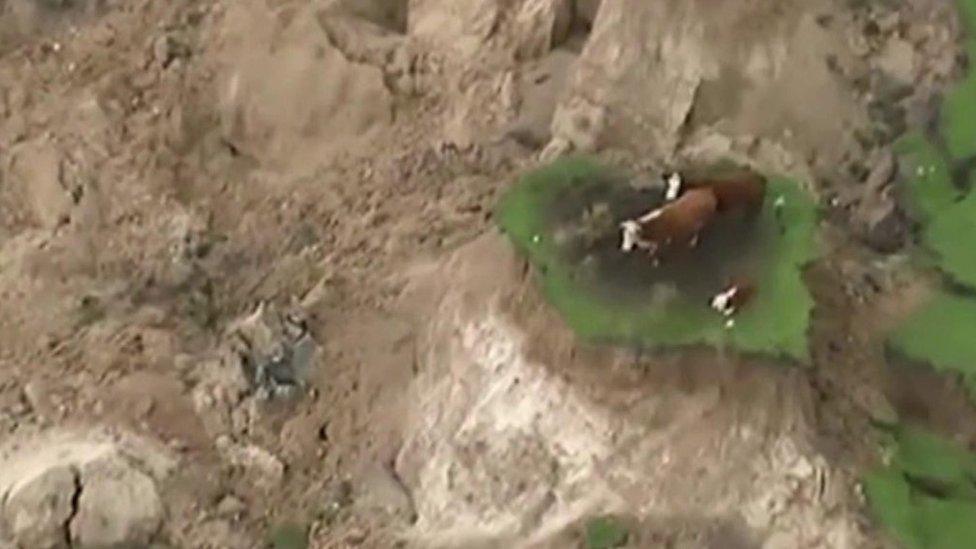
- Published14 November 2016
